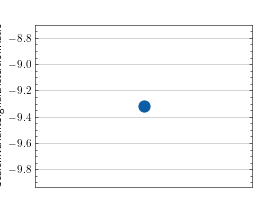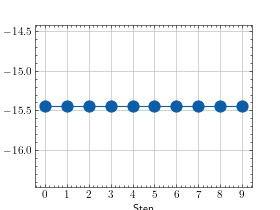Scale-Invariant Signal-to-Distortion Ratio (SI-SDR)¶
Module Interface¶
- class torchmetrics.audio.ScaleInvariantSignalDistortionRatio(zero_mean=False, **kwargs)[source]¶
Scale-invariant signal-to-distortion ratio (SI-SDR).
The SI-SDR value is in general considered an overall measure of how good a source sound.
As input to forward and update the metric accepts the following input
preds(Tensor): float tensor with shape(...,time)target(Tensor): float tensor with shape(...,time)
As output of forward and compute the metric returns the following output
si_sdr(Tensor): float scalar tensor with average SI-SDR value over samples
- Parameters:
kwargs¶ (
Any) – Additional keyword arguments, see Advanced metric settings for more info.
- Raises:
TypeError – if target and preds have a different shape
Example
>>> from torch import tensor >>> from torchmetrics.audio import ScaleInvariantSignalDistortionRatio >>> target = tensor([3.0, -0.5, 2.0, 7.0]) >>> preds = tensor([2.5, 0.0, 2.0, 8.0]) >>> si_sdr = ScaleInvariantSignalDistortionRatio() >>> si_sdr(preds, target) tensor(18.4030)
- plot(val=None, ax=None)[source]¶
Plot a single or multiple values from the metric.
- Parameters:
val¶ (
Union[Tensor,Sequence[Tensor],None]) – Either a single result from calling metric.forward or metric.compute or a list of these results. If no value is provided, will automatically call metric.compute and plot that result.ax¶ (
Optional[Axes]) – An matplotlib axis object. If provided will add plot to that axis
- Return type:
- Returns:
Figure and Axes object
- Raises:
ModuleNotFoundError – If matplotlib is not installed
>>> # Example plotting a single value >>> import torch >>> from torchmetrics.audio import ScaleInvariantSignalDistortionRatio >>> target = torch.randn(5) >>> preds = torch.randn(5) >>> metric = ScaleInvariantSignalDistortionRatio() >>> metric.update(preds, target) >>> fig_, ax_ = metric.plot()

>>> # Example plotting multiple values >>> import torch >>> from torchmetrics.audio import ScaleInvariantSignalDistortionRatio >>> target = torch.randn(5) >>> preds = torch.randn(5) >>> metric = ScaleInvariantSignalDistortionRatio() >>> values = [ ] >>> for _ in range(10): ... values.append(metric(preds, target)) >>> fig_, ax_ = metric.plot(values)

Functional Interface¶
- torchmetrics.functional.audio.scale_invariant_signal_distortion_ratio(preds, target, zero_mean=False)[source]¶
Scale-invariant signal-to-distortion ratio (SI-SDR).
The SI-SDR value is in general considered an overall measure of how good a source sound.
- Parameters:
- Return type:
- Returns:
Float tensor with shape
(...,)of SDR values per sample- Raises:
RuntimeError – If
predsandtargetdoes not have the same shape
Example
>>> from torchmetrics.functional.audio import scale_invariant_signal_distortion_ratio >>> target = torch.tensor([3.0, -0.5, 2.0, 7.0]) >>> preds = torch.tensor([2.5, 0.0, 2.0, 8.0]) >>> scale_invariant_signal_distortion_ratio(preds, target) tensor(18.4030)
